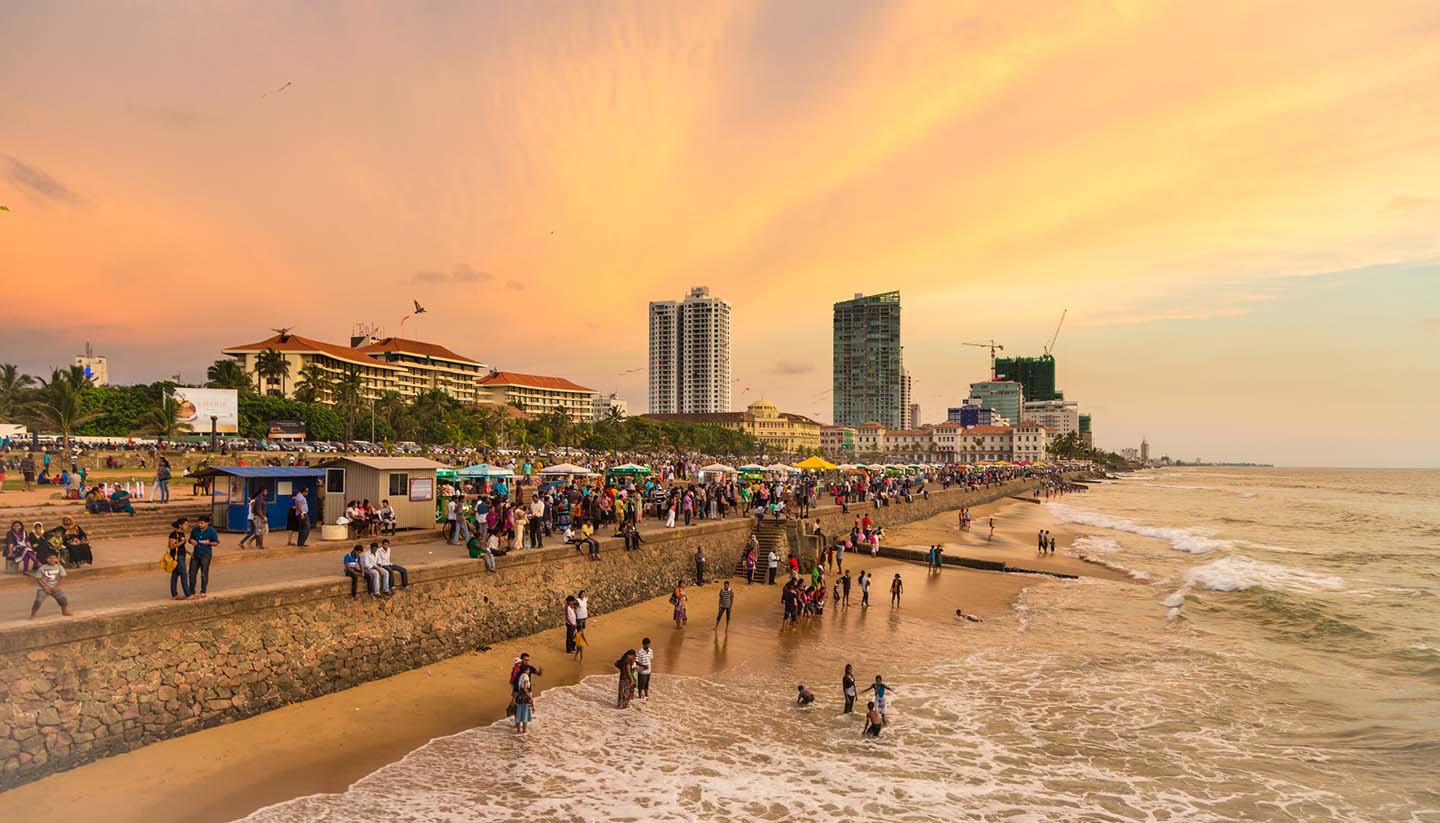 Sri Lanka is in talks with a Singapore based company to transform Colombo and give it a new look.
Sri Lanka is in talks with a Singapore based company to transform Colombo and give it a new look.
President Ranil Wickremesinghe said that the vision to transform Colombo into a beautiful city is already in motion, with plans provided by Surbana Jurong.
Surbana Jurong Group is a global urban, infrastructure and managed services consulting firm, with over 70 years of track record in successful project delivery. Headquartered in Singapore, the group has a global talent pool of 16,000 across Surbana Jurong and its member companies AETOS, Atelier Ten, B+H, KTP, Prostruct, RBG, SAA, Sino-Sun and SMEC, based in more than 120 offices in over 40 countries. They include architects, designers, planners, engineers and other specialists driven by progressive thinking and creative ideas to help shape a better future.
President Wickremesinghe said that apart from Colombo, Surbana Jurong is also actively involved in creating a tourist zone from Verugal Aru to Batticaloa and Arugam Bay areas, contributing to the growth of the tourism industry.
President Ranil Wickremesinghe made these remarks at an international conference on Architecture, which was organized by the Royal Institute of British Architects (RIBA) Chapter in Sri Lanka, in collaboration with the American Institute of Architects (AIA) and the Italian Embassy of Sri Lanka, on the theme: “Architecture: A Lasting Impact,” held at Cinnamon Grand, Colombo.
The President said that the focus on expanding the tourist industry is expected to create opportunities for non-government universities in Sri Lanka. The recent enactment of the new act, allowing provincial councils to establish universities, marks the beginning of this endeavour. There is a growing need for skilled professionals, including engineers, architects, IT specialists, and others, with the demand estimated to be at least 10,000 engineers alone.
To address these requirements, discussions are underway with Japan, which has shown a willingness to assist in the past. Despite some challenges posed by the recent crisis, the commitment to progressing these plans remains strong, with the hope of securing the necessary support to meet the country’s developmental needs.
“Envisioning the future, the potential for architects to participate in the development of the Port City holds significant promise. A notable portion of the Port City land is under Government ownership and is slated for diverse utilization. The involvement of the private sector in this initiative offers an added avenue to harness architectural expertise. This exploration requires collaborative dialogues involving relevant chambers and stakeholders,” the President said.
He said that these emerging opportunities symbolize valuable prospects for Sri Lanka adding that seizing these chances has the potential to establish a notable standing for the nation.
“It’s imperative to acknowledge that as India’s progress persists, architectural possibilities might also arise there. Those with established recognition could potentially tap into this market, mirroring the engagement of architects in Africa for house design,” the President added.
The President acknowledged that his expertise lies primarily in the field of the economy and not architecture. As the discussion revolves around architecture and the lasting impression it creates, the President opted not to delve into the topic extensively. It was emphasized that ancient architects achieved the task of leaving a lasting impression through their work.
The President said that the Government is looking to involve private companies in building homes and structures.
“The Government land that’s worth more than the buildings can be used for this purpose and to relocate people from there and give the land to private companies to build affordable homes and apartments. This will also free up space in Colombo for other developments. It’s like a cycle – more buildings, more possibilities. Imagine what could happen if they repurpose places like Welikada Prison or even the railway area. Some buildings on Mount Mary can be kept, but the rest can be used for new projects. Many areas could benefit from this. And the cost of land today makes it feasible. The Treasury is working on the details, so starting maybe next year or the year after, as the economy gets stronger, this could become a reality,” he added.
The President said that the Government is actively engaged in the promotion of tourism, with a target of increasing the number of tourists from 2.5 million to 5 million, and potentially up to 7.5 million.
The restoration of historical structures to create smaller boutique hotels and the revitalization of larger hotels in various regions across the country represents a significant focus area. This ambitious goal involves doubling the existing capacity. It’s important to note that the majority of this expansion will be realized through the construction of new buildings or the renovation of existing ones, thereby offering yet another avenue for the involvement of architects.
The re-planning of Kandy Town to potentially extend its boundaries up to Teldeniya, along with considerations for incorporating Peradeniya and potentially Talatu Oya, are subjects currently under committee deliberation. Similarly, Galle is engaged in evaluating the enhancement of its urban landscape, particularly the sea frontage.
Additionally, the President said that it is likely that other regions, such as Nuwara Eliya town, will also require reimagining and redesigning in new locations. (Colombo Gazette)


Post a Comment